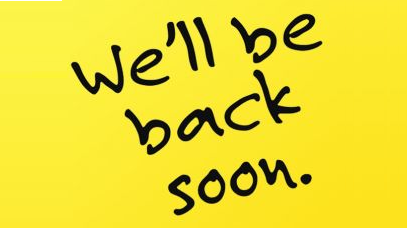This might come as a total surprise to you, but something on the internet made me angry this week. Come to think of it, this is now the third time this year it has happened. The three things that have tilted me are the Dungeons and Dragons OGL license kerfuffle over at Hasbro, the “account sharing” announcements at Netflix, and now most recently, the announcement for changes to 2FA (two factor authentication) over at Twitter.
Each of these three things are incredibly damaging to brands that I have come to use and trust, and honestly, I am heavily rethinking my relationship as a customer with each of them.
Let’s go through them one by one.
Let’s start with Hasbro. I have been a tabletop games enthusiast for pretty close to forty years now. The past decade has seen a massive renaissance in the tabletop games space, as evidenced by Netflix’s “Stranger Things”, Critical Role, and Yet Another Dungeons And Dragons Movie. People in the mainstream have taken to Dungeons and Dragons in a big way—they have made fetch happen.
For some reason, the leadership at the company has declared their Dungeons and Dragons properties to be “under monetized”, and they put out a “draft” change to their licensing that went from zero fees to twenty five percent fees for people making over $750,000 dollars.
Insert record-scratch noise.
There are a lot of people who feel that they floated the agreement to see how much fans of the franchise would react compared to creators. A considerable number of people online unsubbed from the Dungeons and Dragons online subscription product to make sure their voices were heard, and the people responsible for business decisions quickly walked back their proposed changes.
For me, that was too little too late. I am fucking gone as a customer. I am a few weeks away from ordering a replacement game system and doing my double-donut best to persuade anyone within listening distance to do the same. What Hasbro did here was to take a shot at the community of creators with which I self-identify. I have been making my own Dungeons and Dragons campaign materials for the entirety of my gaming lifetime, and I do not know about you, but I dream to get paid someday to do this for a living, even if it is a part-time hobby.
Their decision to go after the creator community for revenues makes sense to the business guy in me, but the sheer aggression of their initial ask was so ludicrous that I am not interested in even listening to anything more that they have to say. Going forward, there are plenty of other, smaller companies who can happily take my money for their systems. If they ever get to Hasbro-size as a business, I would hope they make a decision like “hey, let’s start with a five percent tax for anyone in the million dollars range” or something similar. I bet if Hasbro would have started there, they would have had a much more positive response from the creator community. After all, some people pay more than five percent in state taxes!
Next up, let’s discuss Netflix. I am going to ignore the fact that they flip a coin for canceling new shows. I can forgive them for canceling 1899…ish. What burns me is that they are so stunted for subscriber growth that they have entered into the “squeeze our customers for nickels” phase of their business, and I am squarely within the nickel-holding demographic they are targeting. Let’s talk about account sharing.
I have a son in college. I am happy to say he does not live at home while doing so. Because he is a college student, he has limited income and he is still a dependent by the IRS definition until he gets his piece of paper from his school and joins the economy as a happy worker bee.
I get that Netflix wants to go after password sharers in multiple locations, but I specifically pay extra for two simultaneous streams on the account to accommodate for my son using the family netflix account. Quite frankly, I am offended enough by this that I have already told my family that the day this feature goes into effect is the day we effectively turn off Netflix until the next season of Stranger Things comes out.
To be clear, I have faithfully paid Netflix for years as a “mostly satisfied customer” through all of the stinkers and unfortunate cancellations for shows that I really enjoyed. This is really the deal breaker for me. If they are going to treat me as something to dollar optimize, I am going to put them into the same bucket.
Finally this brings us to Twitter. I just got a notification that reads like 2FA is going away. I can say this pretty firmly because lots of people have responded to “we are taking away text messaging 2FA for free accounts”, and it is not immediately clear that you can just swap it out for a 2FA app of your choice. Let’s skip over the fact that this was messaged super poorly. Let’s also skip over the fact that they could have put up a benign prompt offering something like a month free of ads in order to incentivize people to make the switch. Text message 2FA is one of those things you expect as a dial-tone-level feature for an online service. Telling people it is going away gets everyone wondering what they are going to cut next for cost control reasons.
As a consumer of these services, I am pretty shook. That is how the kids say it, right?
I am not going to try to unpack what the hell these people were thinking in making these decisions. While I can assume they are just spending hours staring at a whiteboard with the single word “ideas?” written at the top, I am not in those meetings and I am not going to pretend like I understand what else they could or should be doing.
As a customer, though… Hoo boy!
Each of these companies has spent a long time cultivating a trust relationship with me. I give them money, they give me things—I was once even a Twitter paying customer! Their conduct in the marketplace is so completely toxic that they have salted the earth for their brands.
I am going to give a special callout to Elon Musk here… He is so egregiously damaging his own brand with this Gong Show conduct that it is materially affecting what people think of other companies for which he allegedly makes decisions!
The impact they are having on their businesses as “b” leadership is just that. Bleedership. They are causing customers to flee to… just about anywhere else. I mean, just look at Mastodon for five seconds and the fact that anyone tells you to find them there illustrates my point.
So what does all this mean?
There comes a point in every product’s life that people start making bad decisions. Jira Product Managers from 2017, I am talking about you here too. These three companies have hit this crazy point where they are staring at the data so hard that they are making ludicrous decisions that would not pass muster with an every day customer. How does this happen? And more importantly, how do you fix it?
Maybe it might start by putting yourself in your customer’s shoes. I remember joining some product leadership meetings at Zynga and hearing some really sharp statements and questions from a few very senior leaders. They all started with “I was playing your game the other day”. I had tremendous respect for them for that, and it was clear to everyone in the room that they cared about those products deeply.
In the case of Netflix, Twitter, and Dungeons and Dragons, I do not feel that level of thought in the decisions they have made recently. I feel like they are super damaged brands to me. I am eating up the last of Netflix and getting ready to shut them off. I am going to modify my text message 2FA on Twitter, but I am on the edge of the “delete my data” box on the decision making flowchart. I am also just flat-out fucking done running Dungeons and Dragons and about to buy some alternative systems—assuming they are back in stock sometime soon.
Building a strong brand position with your customers is very hard. I am reminded of the black swan event from the mobile sms ringtone era—the Crazy Frog Ringtone that everyone had to have, and in order to get it, you signed up for a 99 cent subscription. The ringtone itself was a fad, but the big problem is that it taught an entire ecosystem how to turn off these services by sending a STOP sms. Each of these companies has created their own Crazy Frog Ringtone STOP moment here.
I hope that someone in decision making at each of these places reads my rant and spends a few minutes sitting in the corner asking themselves what they did wrong. The blood on their hands is not just mine. It is also their own.
I’ve got nothing to sell you this week via Amazon Affiliate Link. This Post Is For Serious.
See you next week.









